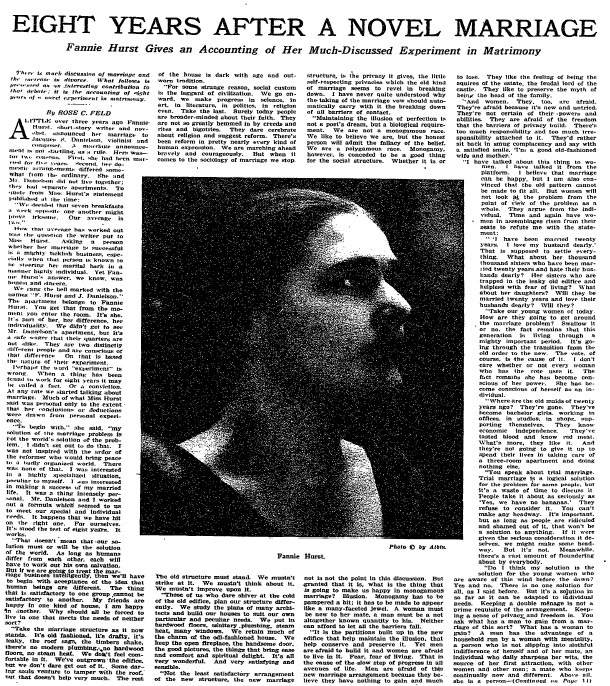Eight Years After a Novel Marriage
In a 1923 New York Times Magazine interview, novelist and short story writer Fannie Hurst described how her current (and second) marriage reflected this bold new era of women's suffrage and independence.
Three years into her marriage to composer and violinist Jacques S. Danielson, Hurst told journalist Rose C. Feld that she and her husband didn't cohabitate, only averaging about two breakfasts together per week.
Hurst said she viewed her more liberated marriage reflecting a recent shift in mores:
Where are the old maids of twenty years ago? They're gone. They've become bachelor girls, working in offices, in studios, in shops, supporting themselves. They know economic independence. They've tasted blood and know red meat. What's more, they like it. And they're not going to give it up to spend their lives in taking care of a three-room apartment and doing nothing else.
Indeed, over the next five years from 1923 to 1928, the national marriage rate declined for five consecutive years.
After bottoming out in 1932, though, the trend reversed and marriage rates increased, peaking in 1946 after millions of men came back from overseas following World War II.
As is common knowledge, the marriage rate has reached new all-time lows in recent years. What may not be as common knowledge is this record level of "never married" people ranks among the primary culprits behind the modern epidemic of loneliness, depression, and despair.
For a few unlucky people, such as those with severe facial burns, not being married or in a relationship may be due to forces outside of their control. For the vast majority of people, though, it's a choice. As the mental health crisis spirals out of control and U.S. suicides reached an all-time high last year, the evidence is increasingly proving that usually, it's the wrong choice.
Eight Years After a Novel Marriage
Published: Sunday, December 9, 1923


